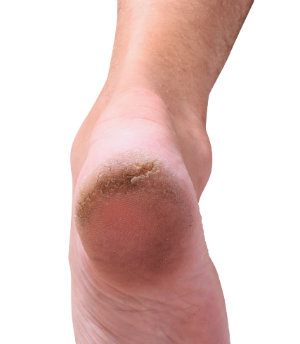Cracked Heels: Causes, Prevention, and Stylish Solutions for Smooth Soles
Cracked heels, a common yet often overlooked issue, can be more than just a cosmetic concern. They can lead to discomfort, pain, and even infections if left untreated. Understanding the what causes cracked heels is the first step towards finding effective solutions. This article delves into the scientific and practical aspects of cracked heels, offering insights from various authoritative sources to provide a comprehensive guide.
Understanding the Causes of Cracked Heels
Cracked heels, medically known as heel fissures, occur when the skin on the heels becomes dry and hard, leading to deep cracks or fissures. The primary what causes cracked heels is the loss of natural oils in the skin, which can be exacerbated by various factors. According to dermatologists, dryness is often the root cause, but external factors such as standing for long periods, wearing improper footwear, and environmental conditions also play significant roles.
One of the most cited reasons for cracked heels is the lack of moisture in the skin. The skin on the heels is thicker and has fewer oil glands compared to other parts of the body, making it more susceptible to dryness. When the skin loses its natural moisture, it becomes brittle and prone to cracking. This is supported by research from Harvard Medical School, which emphasizes the importance of maintaining skin hydration to prevent heel fissures.

Prevention Strategies for Cracked Heels
Preventing cracked heels involves a combination of good skincare practices and lifestyle changes. One of the most effective ways to prevent cracked heels is by keeping the skin hydrated. This can be achieved through regular moisturizing, especially after bathing when the skin is still damp. Using a rich, emollient-based moisturizer can help lock in moisture and soften the skin.
Another crucial aspect is choosing the right footwear. Wearing shoes that provide adequate support and cushioning can reduce the pressure on the heels and prevent dryness. According to podiatrists, shoes with open backs, such as flip-flops, can expose the heels to the elements and lead to dryness. Opting for closed-back shoes with good arch support can help maintain heel health.

Stylish Solutions for Smooth Soles
While addressing the underlying causes and prevention strategies is essential, it’s also important to consider the aesthetic aspect of cracked heels. Many people are concerned about the appearance of their feet, especially during the summer when sandals and open-toe shoes are more common. Fortunately, there are stylish solutions that can help achieve smooth, healthy soles without compromising on fashion.
One popular option is the use of heel balms and creams specifically designed to soften and moisturize the skin. These products often contain ingredients like urea, lactic acid, and alpha-hydroxy acids, which help exfoliate dead skin cells and promote new cell growth. Celebrity podiatrist Dr. Suzanne Levine often recommends these products to her clients, emphasizing their effectiveness in achieving smooth, attractive feet.

Professional Treatments for Severe Cases
For those with severe cracked heels, professional treatments may be necessary. Podiatrists offer various treatments, including debridement, where dead skin is removed using specialized tools. This procedure can help reduce pain and prevent infections. Additionally, laser therapy is becoming increasingly popular for its ability to stimulate collagen production and improve skin elasticity.
Dr. Emily Splichal, a renowned podiatrist and author, often discusses the benefits of professional treatments in her YouTube videos. She highlights how these treatments can provide long-lasting relief and improve the overall health of the feet. For those considering professional help, it’s important to consult with a qualified podiatrist to determine the best course of action.

Lifestyle Changes for Long-Term Relief
Incorporating certain lifestyle changes can also contribute to long-term relief from cracked heels. Diet plays a significant role in skin health, and consuming a diet rich in vitamins A, C, and E can help maintain skin elasticity and hydration. Foods like carrots, oranges, and almonds are excellent sources of these vitamins.
Regular exercise, particularly activities that promote circulation, can also benefit the feet. Walking, swimming, and yoga are all great options. According to fitness expert Jillian Michaels, improving circulation can help deliver essential nutrients to the skin, promoting healing and preventing dryness.

Cracked heels are a common issue that can be effectively managed with the right knowledge and practices. By understanding the what causes cracked heels and implementing preventive measures, you can achieve smooth, healthy soles. Whether through home remedies, professional treatments, or lifestyle changes, there are numerous ways to address this problem and maintain beautiful, pain-free feet.
